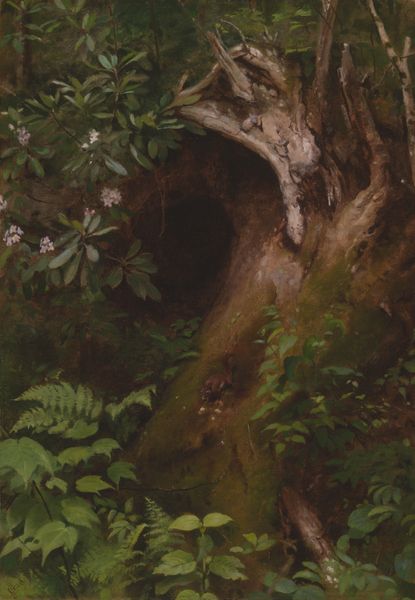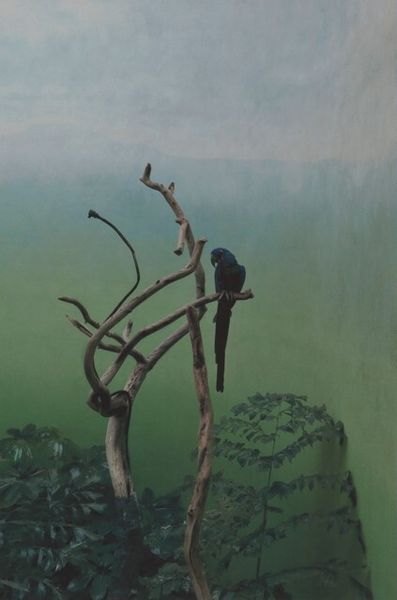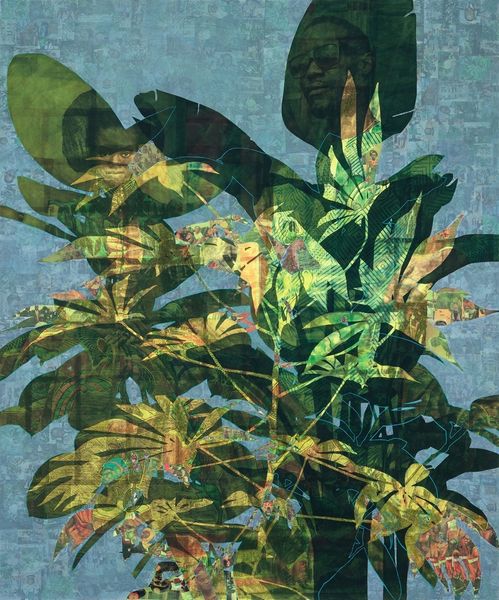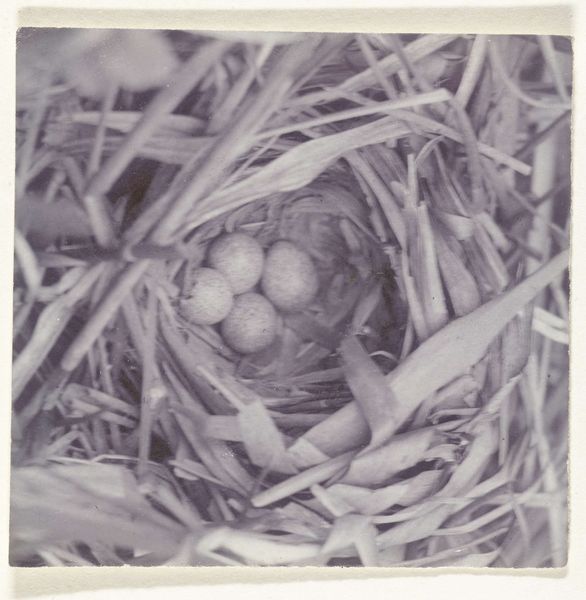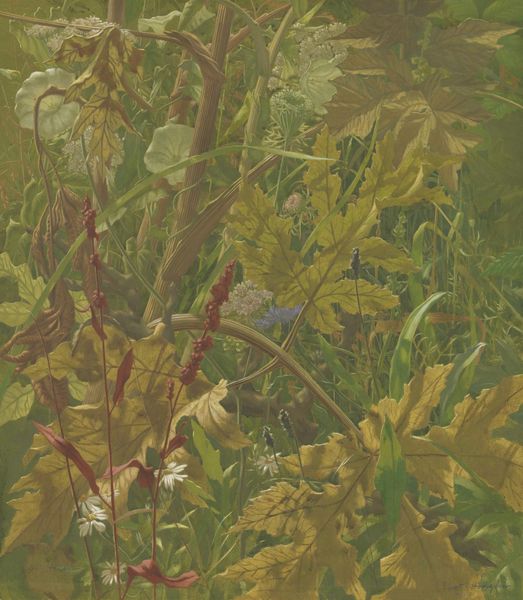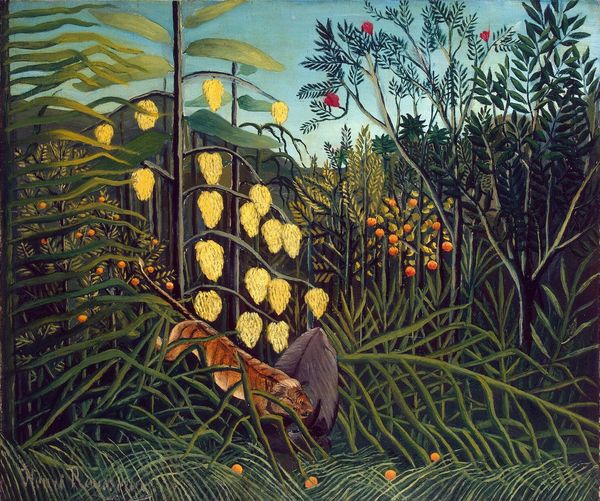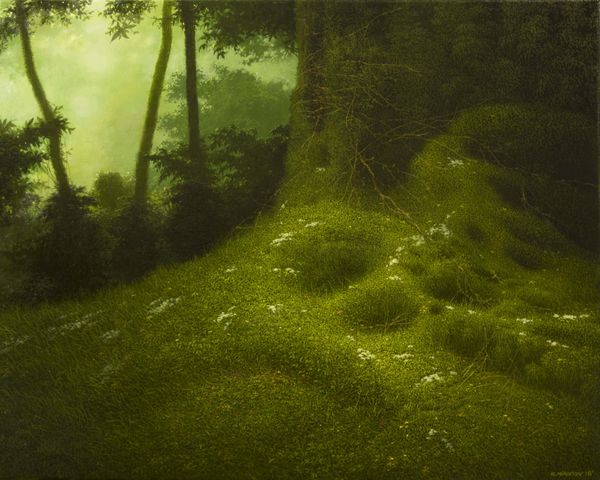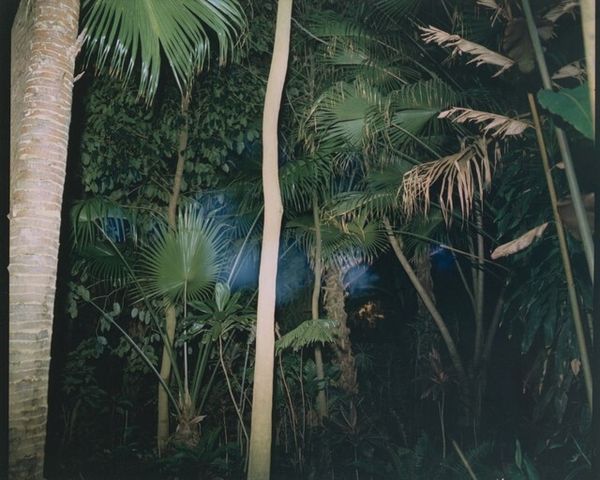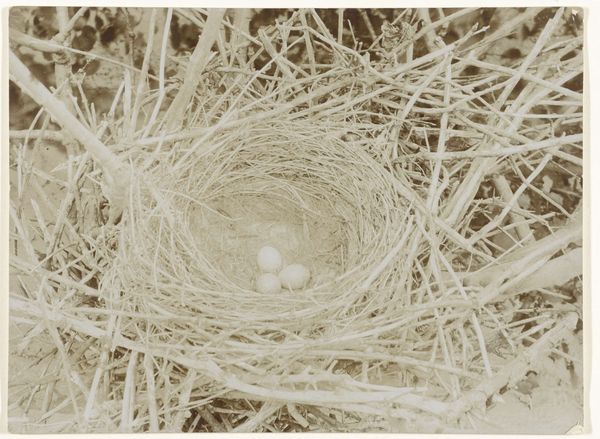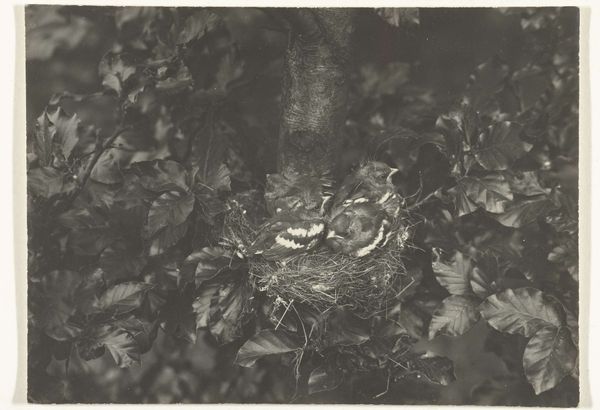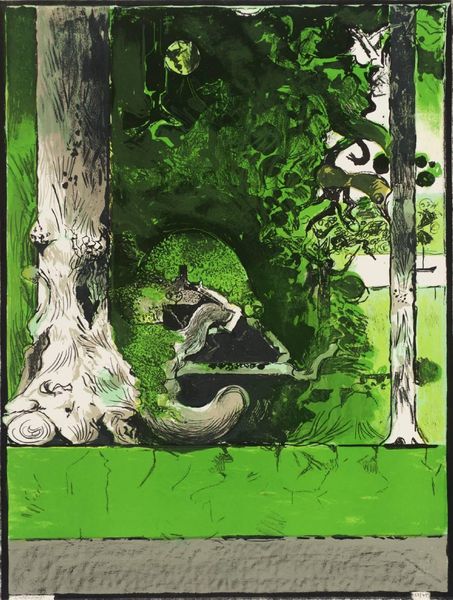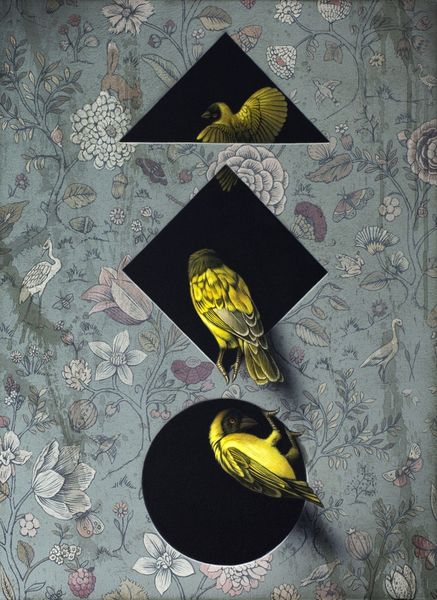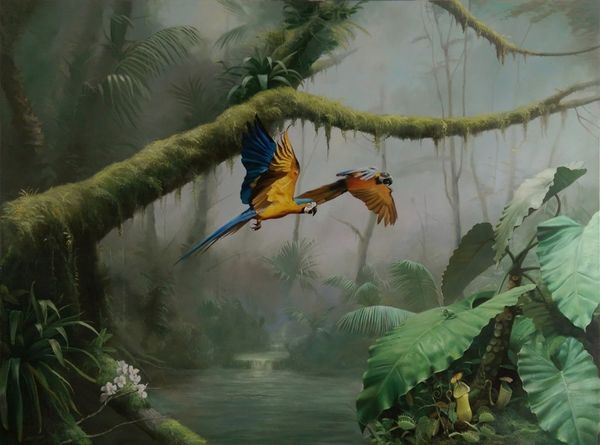
painting
#
fairy-painting
#
animal
#
painting
#
landscape
#
nature
#
hudson-river-school
#
nature
#
realism
Dimensions: 20 × 16.8 cm (7 7/8 × 6 5/8 in.)
Copyright: Public Domain
Curator: Before us hangs Fidelia Bridges' "Bird's Nest and Ferns" from 1863, a charming study in realism, currently residing here at The Art Institute of Chicago. Editor: It's wonderfully intimate, almost secretive. The dark, earthy greens framing the nest... there's a quiet intensity about it. Curator: Bridges’ dedication to detail, particularly regarding her renderings of plant life, deserves attention. It mirrors the botanical interests of the period, reflecting the meticulous cataloging and observation valued by natural historians. One must remember that women artists, like Bridges, were often relegated to these smaller, 'domestic' subjects. It speaks to prevailing societal constraints and, possibly, their subversion through intense observation of their immediate environment. Editor: The composition is quite masterful, isn't it? The careful arrangement of the ferns and foliage creates a visual pathway leading the eye directly to the focal point: the robin's egg-blue eggs nestled within. And that contrast! The muted, natural tones against those bright blue eggs, an unexpected pop of color and a touch of magic. Curator: Consider also the cultural moment: the Hudson River School prioritized grand landscapes, yet Bridges focused on these miniature ecosystems. It prompts questions about what was deemed ‘worthy’ of artistic representation and the labour involved. This intense observation asks viewers to acknowledge the work, the effort put into this form of making visible. The tools involved and the processes for developing the final artifact for consumption were meticulous. Editor: Absolutely. It's also intriguing how the dark background almost dissolves, pushing the nest and ferns forward. The sharp realism juxtaposed with that shadowy setting... creates an almost ethereal quality. Almost fairy-like. Curator: Precisely. This blurring is a way of examining realism. As such, these components reveal an artist actively manipulating natural imagery and reflecting a complex intersection of art, science, and Victorian societal expectations for female artists of the period. Editor: A final observation: notice how she almost personifies nature? It becomes a delicate study on fragility and potential. Curator: I'm drawn to consider how the material accessibility to pigments influenced these color choices during that specific period. A certain blueness may signal how these were traded and used for this form of artistry. Editor: So, from detailed observation of nature, to exploring the possibilities embedded in it. Quite a journey through this small yet captivating piece!
Comments
No comments
Be the first to comment and join the conversation on the ultimate creative platform.
